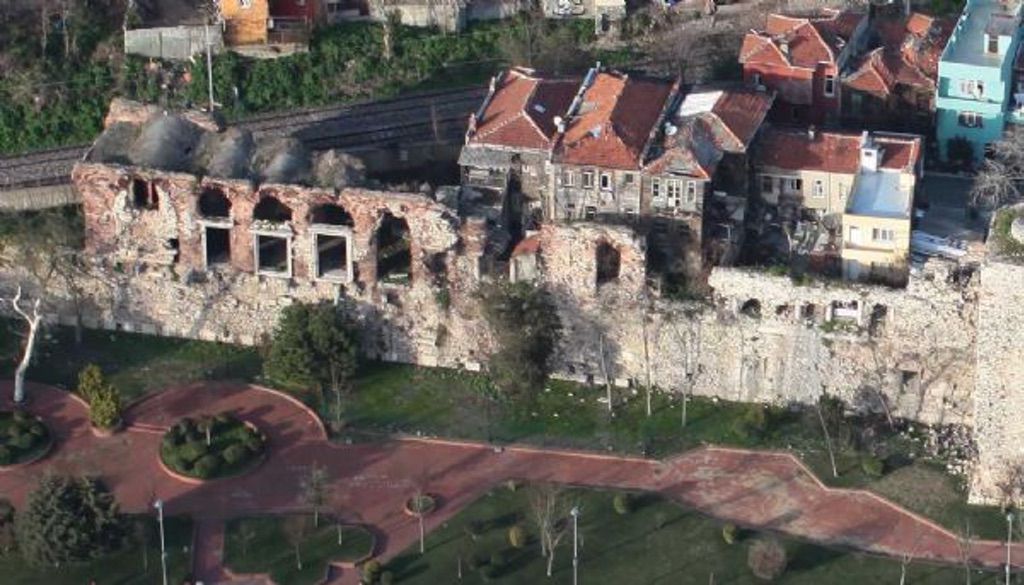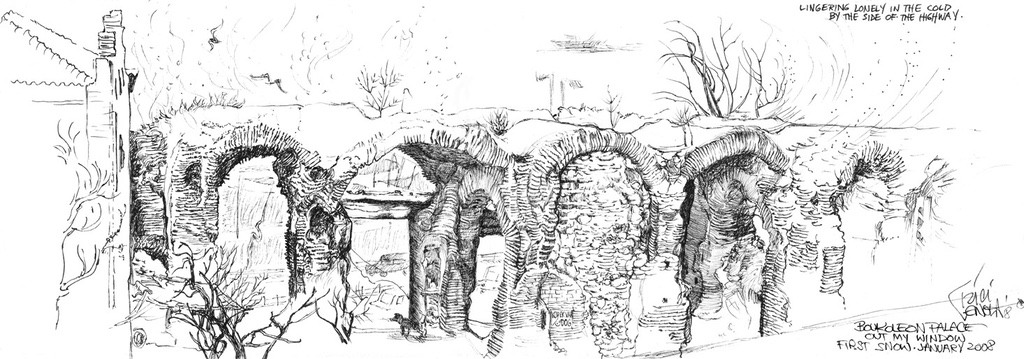
“Something in me has always wanted to crouch at the edge of an alien civilization, making art. Just now I’m looking out over dull silver drifts of sea fading into the mist, peppered with minute black birds in an erratic line. The entire bottom of my view is crusty Byzantine brick ruins. It’s all that’s left of the Boukoleon Palace, built in the ninth century as the First Palace in Christiandom, burned by Crusaders in 1204 but spared by Mehmet the Conqueror 250 years later, when he wept to see, as he wrote, the owl sing, the spider spin a tapestry in the House of the Caesars.” — email to a friend, Winter, 2010.
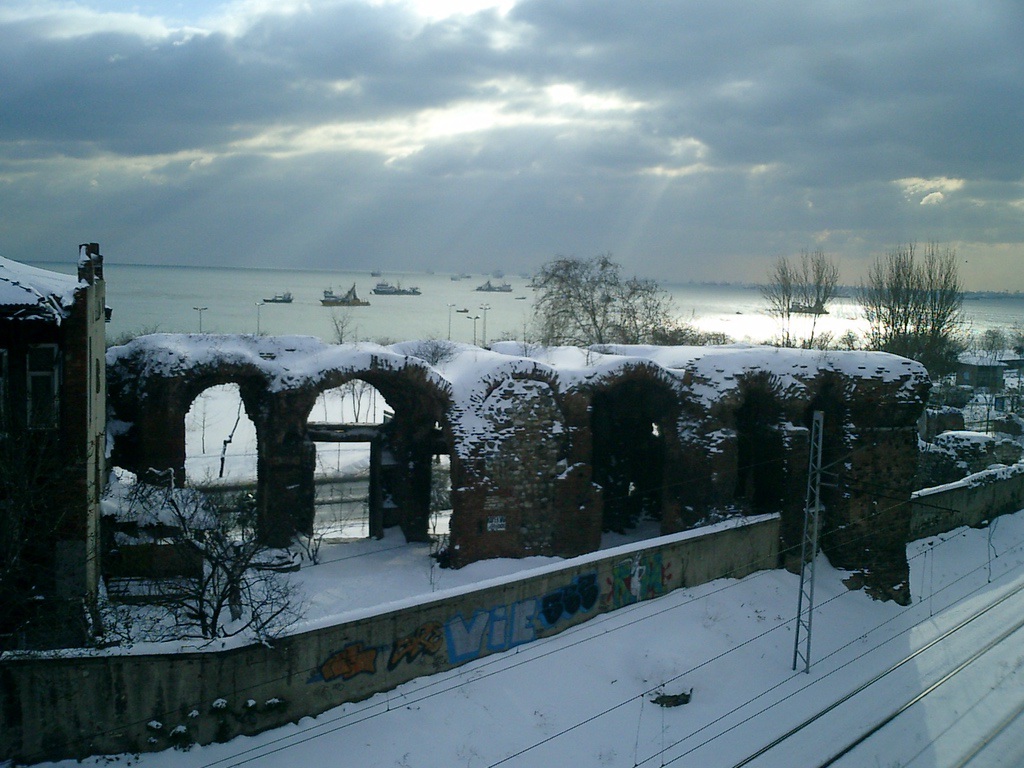
THE INHERITORS
In 1871 the Sultan ran the Orient Express through the remains of the Boukoleon Palace, bisecting it and leaving a considerable chunk of the Palace facade facing the sea.
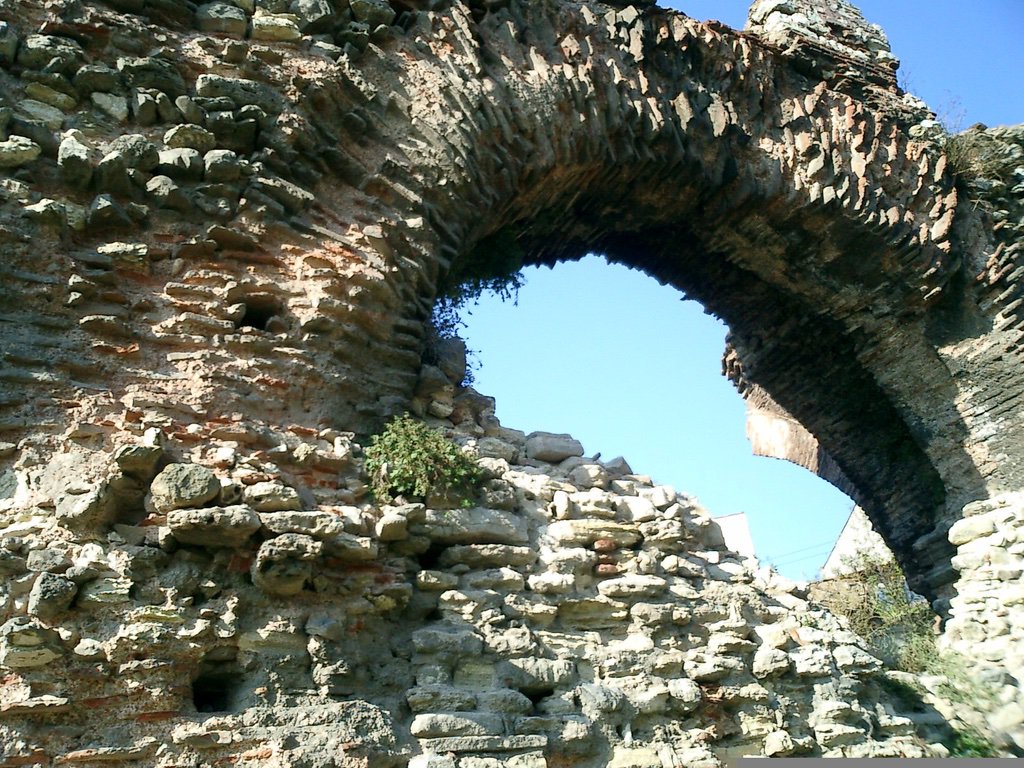
What remains of that is one huge arch, some piles of rubble atop a honeycomb of crumpled towers and mysterious wells going down to Byzantium, and one magnificent double stand of arches surmounted by marble portals on the sea side.
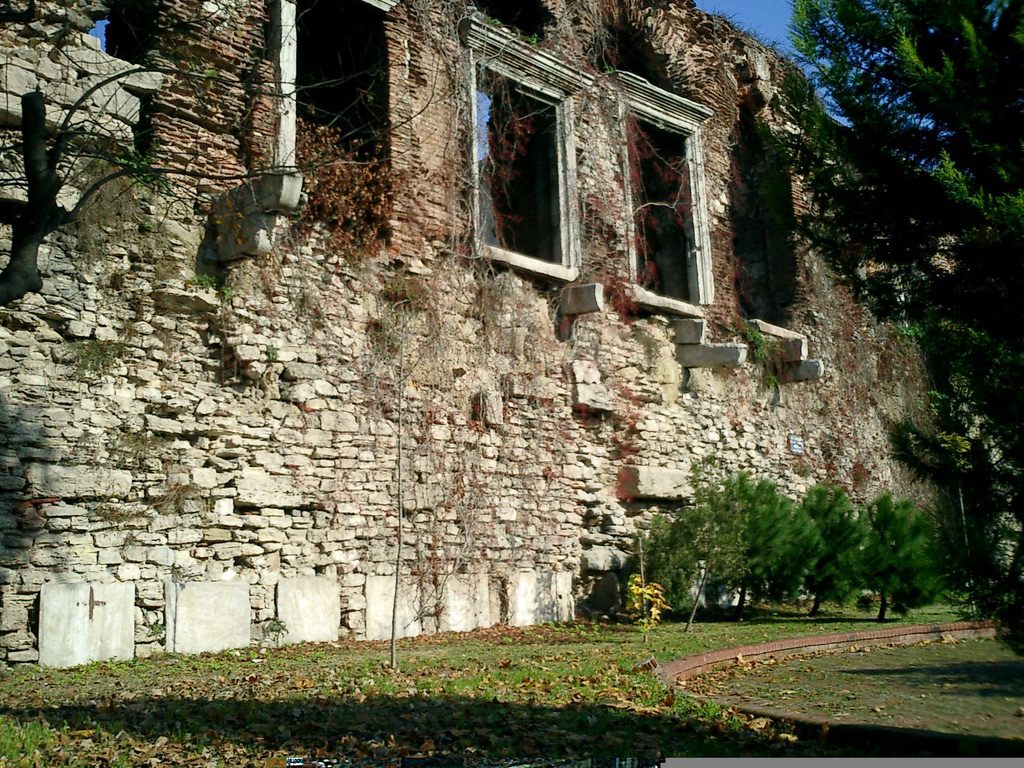
The second floor was torn off, presumably when the government filled in the area between the harbor and the seawall, and built the highway. From 2007-2010 I lived on the other side, across the tracks, looking out over the arches to the sea.
Below my old balcony, in the weeds of the railroad bed, is a huge ziggurat-cut chunk of marble, carved around the sides and scored across the surface with holes for fixing a bas-relief, or perhaps a sheet of marble in contrasting colors. There’s also one pillar and its capital, and some smaller chunks of the ziggurat-cut piece, all decorated with spray paint graffiti.
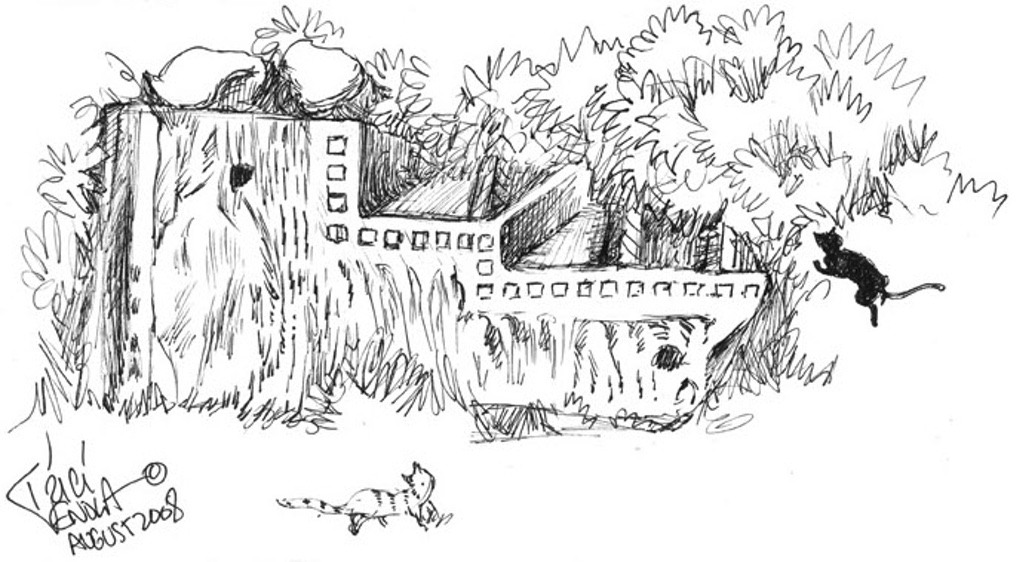
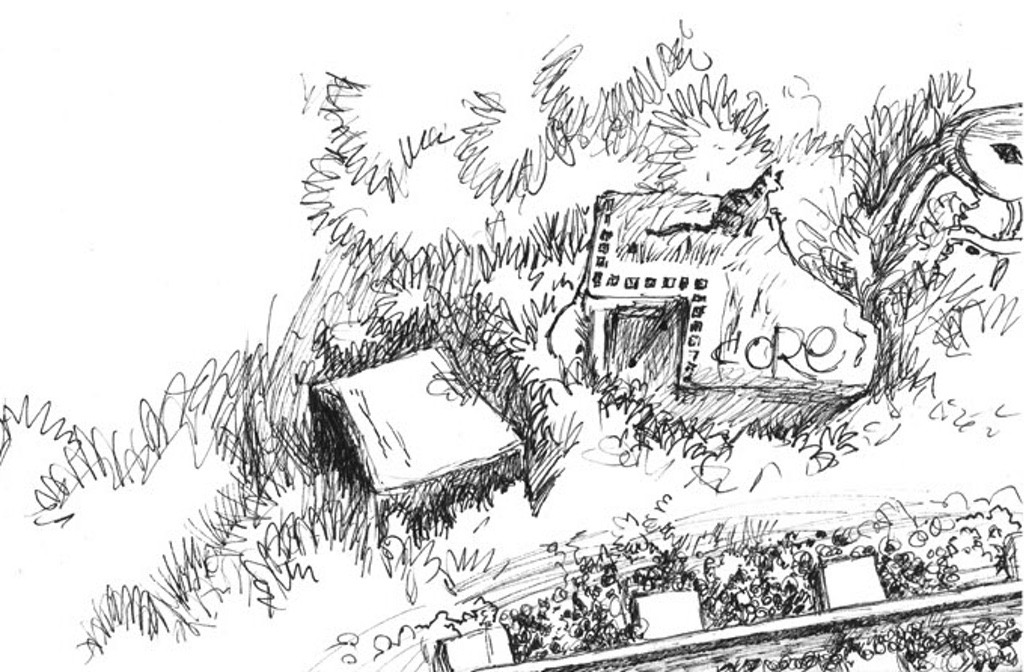
At midday in the summer, railway workers sit on these for smoke breaks. I try to reconstruct from these ziggurat shapes the shape of the Palace.
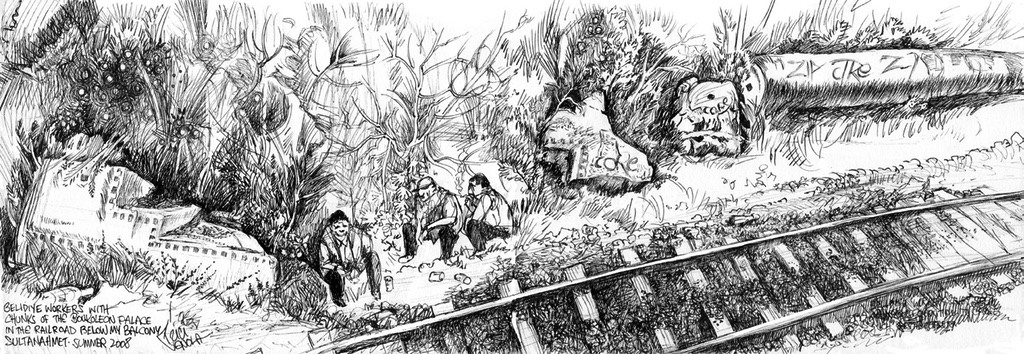
Others have done this. Champion among them is French artist- and my cherished and revered pen-pal, Antoine Helbert.
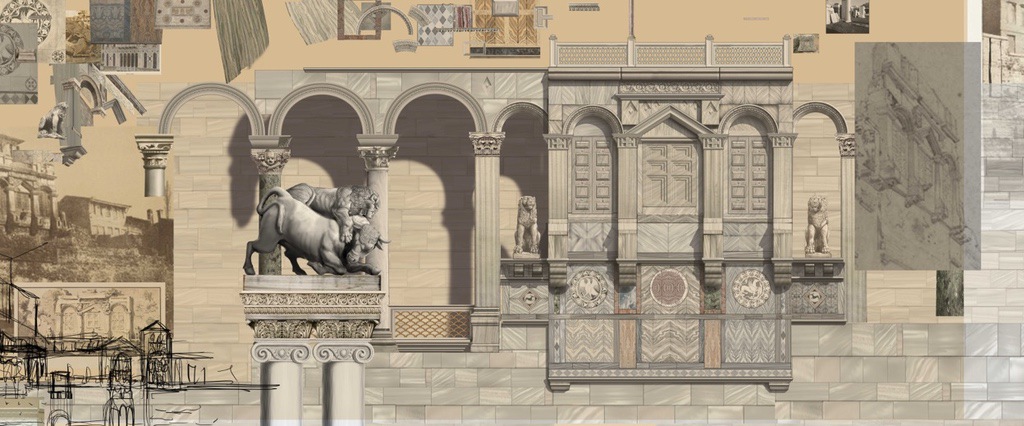
Here on one of his many drawings is a statue of a bull and lion, for Boukoleon is Greek for Bull and Lion, two great power symbols to the Byzantines who built this. Here is the Boukoleon in its day, around 900 CE.
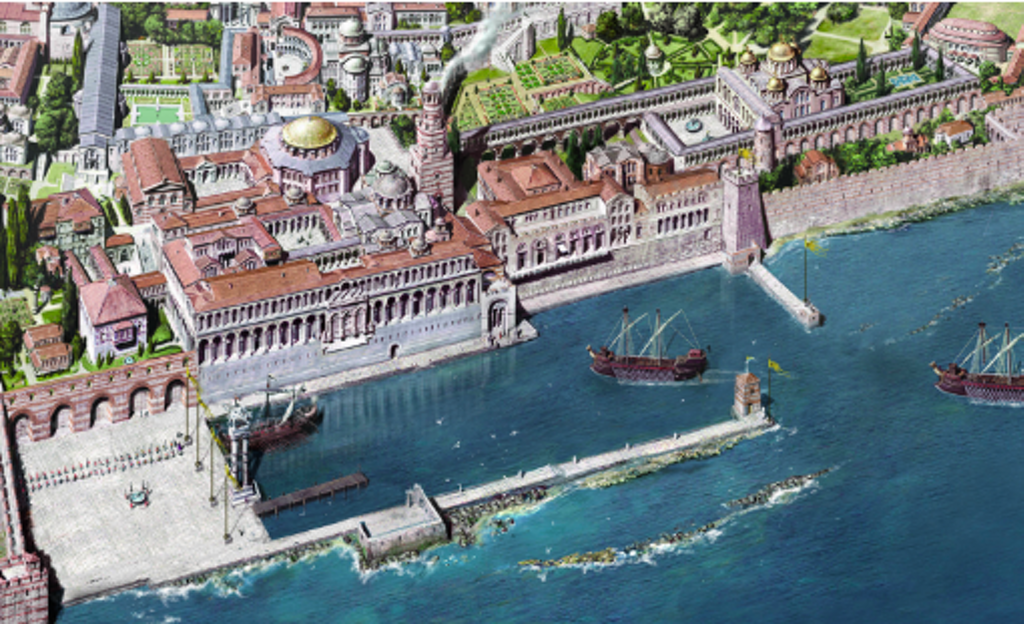
Here it is today.
